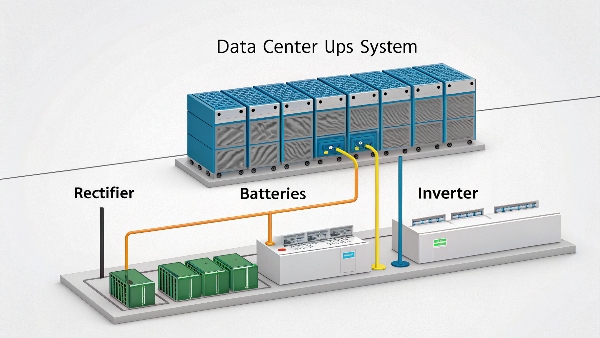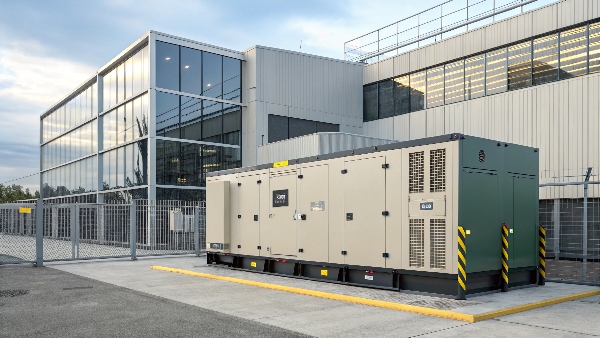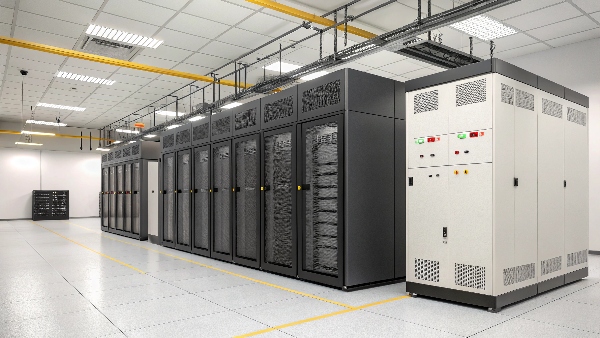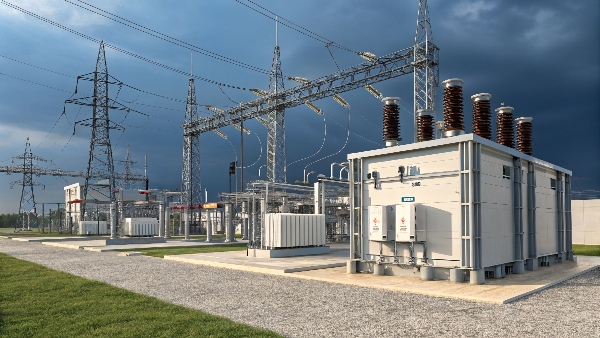Data centers are critical; downtime means disaster. Imagine losing vital data or services grinding to a halt. Understanding your UPS system's components is key to ensuring reliable operation.
A data center UPS system typically includes one or more UPS modules (containing a rectifier/charger, batteries, and an inverter), a static bypass switch, and comprehensive monitoring and control systems, all working to deliver clean, uninterrupted power.

Transition Paragraph:
At Daopulse, with our decade of experience manufacturing UPS systems for global clients, including many data center operators, I've seen firsthand how essential these systems are. The role of data centers is constantly expanding in our digital world. This makes the reliability of their power infrastructure, especially the Uninterruptible Power Supply (UPS), more critical than ever. If you're a Procurement Manager or a System Integrator for a data center, you know that even a minor power flicker can have major consequences. This article will break down the core components of a data center UPS system and explain how they contribute to the uptime you depend on. We need to know what we are buying.
What is the role of a UPS in a network room or data center?
Network rooms and data centers are power-hungry and very sensitive. A small power problem can cause big trouble and cost a lot of money. UPS systems give vital protection.
In a data center, a UPS ensures continuous, high-quality power to critical IT equipment. It protects against outages, sags, and surges, bridging the gap to backup generators or allowing for a safe shutdown.

Dive deeper Paragraph:
The primary role of a UPS in a data center or network room is to provide a constant and clean supply of electricity. Let's look closer at what this means.
Power Conditioning Excellence
IT equipment is very sensitive to power quality. The utility power isn't always perfect. It can have problems like sags (dips in voltage), surges (spikes in voltage), or electrical noise. An online double-conversion UPS, which we at Daopulse often recommend for data centers, constantly rebuilds the incoming power. It converts AC to DC, then DC back to perfect AC. This process filters out nearly all power disturbances.
| Power Problem | Description | UPS Solution |
|---|---|---|
| Blackout (Outage) | Total loss of utility power | Provides battery backup instantly |
| Sag (Brownout) | Short-term low voltage | Boosts voltage to correct level |
| Surge (Spike) | Short-term high voltage | Clamps voltage to safe level |
| Electrical Noise | Interference on the power line | Filters out the interference |
Bridging the Power Gap
When the main utility power fails completely, the UPS instantly switches to its batteries. This provides power for a critical period, usually a few minutes. This time is vital. It allows backup generators to start up and take over the load for longer outages. If there are no generators, or if they fail to start, the UPS provides enough time for IT systems to perform a graceful, orderly shutdown. This prevents data corruption and equipment damage. Business continuity is the main goal here. Our UPS solutions, whether lead-acid or advanced lithium battery systems, are designed for this exact purpose.
How long can a data center run without power?
Power outages are a data center's biggest fear. How much time do you really have before everything stops? It all depends on your UPS battery setup and backup generators.
A data center can run on UPS batteries alone for a few minutes up to several hours, depending on design. With backup generators and sufficient fuel, it can theoretically run indefinitely without utility power.

Dive deeper Paragraph:
The duration a data center can operate without utility power is a critical planning parameter. It's not a one-size-fits-all answer. Several factors come into play.
UPS Battery Sizing and Runtime
The first line of defense is the UPS battery system. The amount of time it can power the load depends on:
- The Load: How much power (measured in kW or kVA) the connected IT equipment draws. The higher the load, the shorter the runtime for a given battery capacity.
- Desired Runtime: Data centers typically design for 5-15 minutes of UPS runtime. This is usually enough to bridge the gap until backup generators are online and stable. Some critical facilities may opt for longer runtimes.
- Battery Type and Capacity: Traditional Valve-Regulated Lead-Acid (VRLA) batteries are common. However, at Daopulse, we are seeing increasing demand for our Lithium-ion battery UPS solutions. Lithium batteries offer longer life, a smaller footprint, faster recharging, and better performance at higher temperatures, though they have a higher initial cost.
The Role of Backup Generators
For outages lasting longer than the UPS battery capacity, backup generators are essential. The UPS system typically signals the generator to start automatically when utility power is lost. Once the generator is running stably, an automatic transfer switch (ATS) transfers the load from the UPS (which then recharges its batteries) to the generator. The ultimate limit then becomes the on-site fuel supply for these generators. Regular testing of both UPS batteries and generators is vital to ensure they perform when needed. Our team helps clients determine the right UPS capacity to seamlessly integrate with their generator strategy.
| Factor | Impact on Runtime | Consideration for Procurement Managers |
|---|---|---|
| Total IT Load (kW) | Higher load reduces battery runtime | Accurate current and future load assessment |
| Battery Capacity (Ah) | Higher capacity increases runtime | Balance runtime needs with space and budget |
| Battery Technology | Lithium may offer longer life/density | Evaluate TCO (Total Cost of Ownership) |
| Generator Availability | Enables very long/indefinite runtime | Fuel storage, maintenance, N+1 redundancy |
How can data centers ensure uptime and reliability?
Uptime is everything for data centers. Any amount of downtime means lost money and a damaged reputation. The solution is a layered approach with strong power, cooling, and backup plans.
Data centers achieve high uptime through redundant power systems (like N+1 or 2N UPS configurations), reliable cooling, rigorous preventative maintenance, continuous monitoring, and well-rehearsed disaster recovery plans. Quality, certified UPS systems are foundational.

Dive deeper Paragraph:
Ensuring maximum uptime and reliability is the core mission of any data center. As a UPS manufacturer, Daopulse plays a key part in the power infrastructure aspect of this mission. Here’s how robust power strategies contribute:
Redundancy in Power Systems
No single component should be a single point of failure. This is where redundancy comes in. Common power redundancy designs include:
- N+1 Redundancy1: This means having at least one more UPS module (or power supply, generator, etc.) than is needed to power the critical load (N). If one module fails, the extra one (the "+1") takes over seamlessly.
- 2N Redundancy2: This provides two completely independent power systems, each capable of powering the entire IT load. This offers a very high level of fault tolerance. If one entire power path fails, the other continues to support the load.
- 2N+1 Redundancy1: This combines the 2N approach with an additional spare module in each path for even greater resilience.
We design and manufacture modular UPS systems that can be easily configured for N+1 or greater redundancy, allowing for scalability as our clients' needs grow. Our systems are certified (CE, RoHS, ISO) to meet stringent quality standards.
Proactive Maintenance and Advanced Monitoring
Even the best-designed systems need care. Regular, proactive maintenance is crucial. This includes battery health checks, electrolyte level checks (for flooded cells), connection integrity, fan operation, and timely replacement of components nearing their end-of-life. Many modern UPS systems, including ours, offer advanced monitoring capabilities. These systems can provide real-time status, alert to potential issues, and allow for remote diagnostics. This helps System Integrators and facility managers to identify and address problems before they lead to downtime.
| Uptime Strategy | Description | Benefit for Data Center |
|---|---|---|
| Power Redundancy (e.g., 2N) | Fully independent, duplicated power paths from utility to IT equipment | High fault tolerance; one entire path can fail without impact |
| Regular Preventative Maintenance | Scheduled inspections, testing, and replacement of aging UPS components | Minimizes unexpected failures, extends equipment life |
| Advanced Remote Monitoring | Real-time data on UPS status, battery health, alarms, and environmental factors | Early fault detection, faster response, trend analysis |
Where do data centers get their power?
Data centers use huge amounts of electricity. Where does it all come from, and is it dependable? Mostly from the utility grid, backed up by strong on-site power systems.
Data centers primarily draw power from the public utility grid, often via multiple substations for redundancy. They supplement this with on-site UPS systems and backup generators for truly continuous operation.

Dive deeper Paragraph:
A data center's insatiable appetite for power requires a robust and multi-layered supply chain. As a UPS provider, Daopulse focuses on the critical link that ensures clean and uninterrupted power within the facility.
The Primary Source: The Utility Grid
The journey of power typically begins at the local utility provider. Data centers, due to their high demand, are often connected directly to high-voltage transmission lines. Site selection for a data center heavily considers the reliability of the local grid. To enhance this reliability, many data centers arrange for:
- Dual Feeds: Power feeds from two or more independent utility substations. If one substation goes down, the other can still supply power.
- Dedicated Substations: Very large data centers might even have their own on-site substation.
On-Site Power Infrastructure
Once power enters the data center campus, it's not yet ready for the sensitive IT equipment. It goes through several stages:
- Transformers: These step down the high voltage from the utility to a more usable voltage for the facility.
- Switchgear: This equipment distributes power throughout the data center and provides protection.
- UPS Systems: This is where our products, like lead-acid or lithium battery UPS solutions, come in. The UPS takes the utility power (or generator power), conditions it, and provides battery backup during outages.
- Backup Generators: For extended outages, diesel or natural gas generators kick in to supply power, with the UPS bridging the transition.
There's also a growing trend towards incorporating renewable energy sources, like solar or wind, often through Power Purchase Agreements (PPAs), to improve sustainability. Our UPS systems are designed to integrate seamlessly into these complex power architectures, ensuring that the final power delivered to the servers is always clean and stable.
| Power Source Tier | Role in Data Center Power | Key Reliability Factor(s) |
|---|---|---|
| Utility Grid | Primary, bulk power supply | Grid stability, substation redundancy, line maintenance |
| UPS System | Power conditioning, instantaneous backup, generator bridge | Battery health, capacity, redundancy (N+1, 2N), maintenance |
| Backup Generators | Long-duration outage protection | Fuel availability, regular testing, maintenance, ATS function |
Conclusion
A robust UPS system, with its core components, is fundamental to data center uptime. It ensures clean, continuous power for our increasingly digital world, demanding careful planning and quality components.

